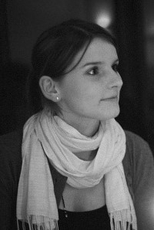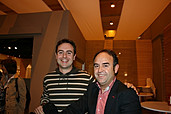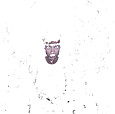
Dipl.-Inf. Eva Eibenberger
Alumnus of the Pattern Recognition Lab of the Friedrich-Alexander-Universität Erlangen-Nürnberg
Many computer vision applications dealing with the detection and recognition of humans and their activities require the segmentation of skin regions as a pre-processing step. Examples for such systems can be found in the fields of surveillance, human computer interaction and face recognition [1]. Although, color cues have the advantage to be relatively invariant regarding scale and orientation, the utilization of color information is often a challenging task, as in images the appearance of the skin color is dependent on different factors, such as illumination condition, ethnicity, camera characteristics etc.
The reviews by Kakumanu et al. [1] and Vezhnevets et al. [2] illustrate, that an extensive body of work on skin segmentation exists. A minor set of techniques applies explicitly defined color thresholds, which are empirically determined. These approaches are often too inflexible and can not easily adapt to illumination variations. The largest group of approaches uses machine learning techniques to estimate the probability of skin pixels. Although these approaches are more flexible, their degree of illumination adaptability is sensitive to the training set. Illuminant colors outside the training data can not be handled well.
Some methods exist that are explicitly designed for handling illumination variations. They can be separated into two categories: a) color-constancy techniques and b) dynamic adaptation techniques. For the first group an estimate of the illuminant color is used to create a new normalized image, where colors are independent of the incident illuminant. In the second group the skin-color model is transformed according to the measured variations in the image colors [1]. Some illuminant adaptive methods have restrictive requirements, as they are constrained to frontal face images or depend on training data and do not explicitly use the illuminant color.
Another group of physics-based approaches analyzes the change of the skin locus [3] under varying illumination. With respect to normalized RGB space, Martinkauppi et al. [4] showed that for different illuminant colors the skin pixels lie inside a region which can be bounded by two quadratic functions. Furthermore, Störring et al. [5] showed that for a known camera and known color temperature of the illuminant the search area for skin color can be adjusted accordingly. The normalized RGB space has also been used for illuminant-invariant tracking and locating image-specific skin clusters. All prior research on skin locus uses the normalized RGB space which is mathematically more complex and which often makes the explicit knowledge of the illuminant color temperature mandatory. However, the color temperature is more difficult to extract than the illuminant color.
The goal of this project is the development of a robust illumination-adaptive skin segmentation approach. Thereby, the focus is on physics-based skin models.






[1] Kakumanu, P.; Makrogiannis, S.; Bourbakis, N.G.:
A Survey of Skin-Color Modeling and Detection Methods.
Pattern Recognition 40 (2007) 1106-1122
[2] Vezhnevets, V.; Sazonov, V.; Andreeva, A.:
A Survey on Pixel-Based Skin Color Detection Techniques.
Proceedings of GraphiCon (2003) 85-92
[3] Störring, M.; Andersen, H.J.; Granum, E.:
Skin Colour Detection under Changing Lighting Conditions.
Symposium on Intelligent Robotics Systems (1999) 187-195
[4] Martinkauppi, J.B.; Soriano, M.N.; Laaksonen, M.H.:
Behavior of Skin Color under Varying Illumination Seen by Different Cameras at Different Color Spaces.
Proceedings of SPIE (2001) 102-113
[5] Störring, M.; Andersen, H.J.; Granum, E.:
Physics-Based Modelling of Human Skin Colour under Mixed Illuminants.
Robotics and Autonomous Systems 35 (2001) 131-142
My research is funded by the ![]() International Max Planck Research School (IMPRS) for Optics and Imaging and the
International Max Planck Research School (IMPRS) for Optics and Imaging and the ![]() Erlangen Graduate School in Advanced Optical Technologies (SAOT) by the German National Science Foundation (DFG) in the framework of the excellence initiative.
Erlangen Graduate School in Advanced Optical Technologies (SAOT) by the German National Science Foundation (DFG) in the framework of the excellence initiative.




